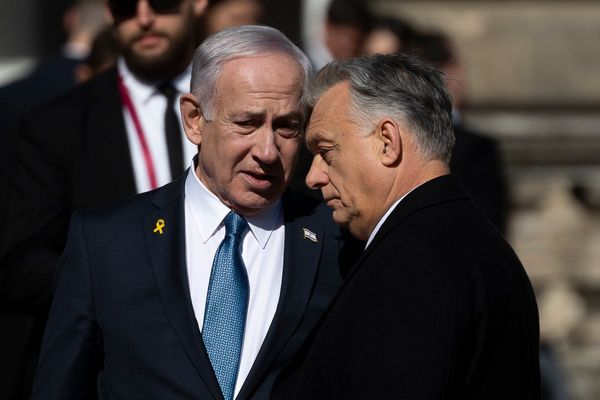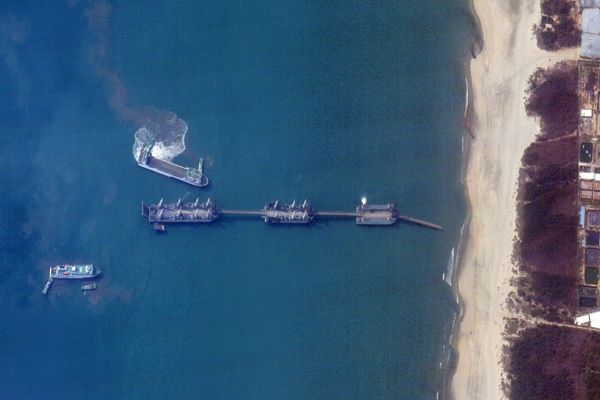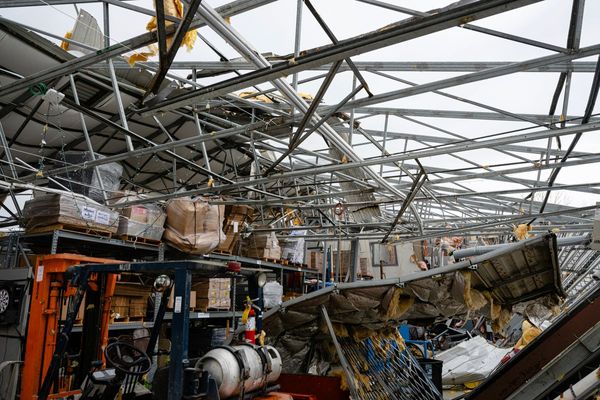
Before Vladimir Putin launched his full-scale invasion of Ukraine in 2022, Olexsandr, 32, had been an IT guy at a logistics company. “I think you know it because we have a big warehouse in England. I haven’t been.”
Today, Olexsandr’s reputation is not built on his skills in fixing software glitches for a multinational company, but on a kill tally that makes him perhaps Ukraine’s deadliest kamikaze drone pilot on the frontline. “I haven’t met anyone who has destroyed more,” he reluctantly admits.
Since last May, Olexsandr, who has not enlisted in the army but floats around the frontline offering his deadly thumbs to brigades in need, has acted as a one-man wrecking ball through the Russian army.
He pulls up his mobile phone to examine an inventory. He has destroyed five tanks, five combat infantry vehicles, five armoured personnel carrier, one combat reconnaissance vehicle, two multipurpose lightly armed transporters, an infantry fighting vehicle and an airborne combat vehicle. That is 20 pieces of deadly and highly valuable pieces of Russian hardware taken off the battlefield.

Then there are the six tanks and 10 armoured vehicles that he damaged sufficiently to put them out of combat.
He prefers not to think of the lives that have been taken in the process but he concedes that, on Friday morning at 7.15am, his explosive-packed drones killed two Russian soldiers and injured six in a fortified trench position near the village of Robotyne in the southern Zaporizhzhia region, where Ukraine’s counter-offensive forces are inching forward through a phalanx of tripwires and anti-personnel and anti-armour mines. Word had just reached him that the position has since been taken. “We did good work,” he says.
Oleksandr – he has asked for his full name not to be used – has footage to prove his deadly work. A video from Friday morning shows Russian soldiers, unaware of the peril from above, firing over the trench at Ukrainian soldiers seeking to storm their position, only for one of Olexsandr’s Mavic 3 drones to make its lethal swoop.
It is not to brag, however, that he has agreed to meet by a sunflower field in Zaporizhzhia, near to where he was killing and maiming just a few hours earlier. “War is nothing to boast about,” he says. Olexsandr is here to complain.

Earlier this week, Ukraine’s defence minister, Oleksii Reznikov, announced the 10th model of first person view drone (FPV) “that officially goes into operation in the armed forces of Ukraine”.
Not only has Olexsandr, nor any of his colleagues, not seen this drone, but they say they have not received any such hardware from the ministry of defence.
Olexsandr’s drones are all made from components bought online from China and then put together by two of his friends on the 24th floor of an apartment block in Kyiv.
He either picks them up on his monthly trips back to Ukraine’s capital where he lives or they are delivered by post to him close to his field of operation.

The price is about $400 (£314) a drone and the costs are largely met by generous unnamed donors. That is said to be significantly less than the $650 being paid by the big voluntary organisations that are buying up drones for other army units due to the lack of equipment from the defence ministry. “We can win this war with drones,” says Olexsandr. And yet the Russian drive to build them in their thousands and provide them cheaply to the frontline is not being replicated on the Ukrainian side, he adds.
“It is why even now I am not joining the armed forces – if you join the commander can be a fool and not know how to conduct quality operations,” he says. “I’m very effective by myself. I am ready to fight until the end of the war like this. According to official information, Russia produces 3,000 drones from the plants. In Ukraine, some small rich tsars [profiteering businessmen] produce these drones for selling, volunteer funds buy them and then charge them $650 a drone.”
He has lost eight reconnaissance drones to Russian fire, including two last month when a tank shot close to his position leaving him with a deep gash to his leg. “The Russians have changed their strategy to try and kill drone crews,” he says. Olexsandr, who would normally expect to get through around 10 kamikaze drones a month, used five the previous night and so will need to resupply.
Olexsandr’s nom de guerre is Majeur, which can be translated as “rich boy”. It stuck after he was teasingly called it by a friend on the basis that Olexsandr’s Kalashnikov rifle, when they both used to help man checkpoints during the battle for Kyiv last March, was of a slightly newer model. “I don’t like it really but I will call myself it because my friend is dead now and out of respect,” he says.

Olexsandr had little experience of drones before February 2022 but could see they could be crucial to the war effort and so practised with one purchased from the internet. “I wanted to find something where I could be most useful,” he says.
He met Oleg Sentsov, a film-maker, writer and activist at a checkpoint; the pair became friends, and it was thanks to Sentsov and his connections that Olexsandr was first introduced to a brigade in the field as a drone pilot with a difference.
Since then, it is his reputation that brings Olexsandr work. On a reconnaissance mission, Olexsandr prefers to be alone. He will typically be set a kilometre square piece of ground to monitor, working from as close as 800m from the target and as far away as 12km.
When he is working with kamikaze drones, he operates in teams of three to four. One will operate a reconnaissance drone and another pilots the kamikaze drone itself, which is attached to up to 600g of C4 explosive material. Then there will be at least one other person overseeing the signal and wider communications.
The Ukrainian crew could be as close as 400m from the target or as distant as 5.5km away. Those with whom Olexsandr works in the field are collectively known as Force Majeur.
Jr Sgt Petro Shttanko, 33, who started collaborating with Force Majeur in June and gives the green light on operations, said he had been inspired by Oleksandr’s determination. “You can’t find everywhere this motivation to fight with such energy,” he says of his colleague.

Olexsandr says he is constantly trying to improve. On the morning before the interview, he found a fully laden Russian kamikaze drone that had lost connection and fallen out of the sky. He shows it off, now it has been disconnected from its explosive load. “It’s not so bad quality but we make it better. It has a very good battery but not so good motor. I need to check everything, its motherboard, its fusing.”
The key when in the field, Olexsandr says, is to relax. “I will start at 2am and be drinking coffee by 8am,” he adds.
“It’s like playing a computer game, you know?” Olexsandr says of his deadly and unenviable task, which, in the pervasive climate of war, has become almost shockingly routine for him. “It’s fun, you know? When it’s fun, when you relax, it’s easy. When you are tense, it is not possible to work correctly. Anyone can do it.”







